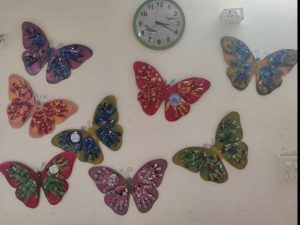Replacing the word ‘disabled’ with another word ‘differently – abled’ doesn’t really change anything. The person is still defined by that characteristic, just that it’s now a new label.
The point is not to define a person by the disability, and to look for strengths, even unique strengths, instead.
Looked that way, it’s people like a Nadal or a Tendulkar who are truly ‘differently abled’. Yet the fact remains that no one calls them that.
There have been several successful efforts to identify unique strengths that a disabled person may have. E.g. Visual impairment often correlates with a keener sense of smell. Some of them have found jobs as perfume testers in Mumbai.
It’s however way more difficult — even impossible — to define strengths for the mentally disabled folks. Cognitive ability is foundational. Brain impairments leave a variety of signatures in the various sensory and motor capabilities. Each individual is different.
There is a wide variation across people. Some of the high functional adults can do pretty much anything, although there may be some special needs ( mobility impairment in the main ). For the others we really need to look at jobs that have repetitive tasks and do not require judgement. It’s difficult to assess ideas like ‘process’, ‘standardisation’ or ‘six sigma’ and frustrating to try to put them in practice.
So creating vocational alternatives for them has meant exploring work where Rejection Rates are not a problem, paper shredding for instance. Or stuffing toys with the wool. And all of these in a job work format. It’s sort of self-employed, and not a ‘job’ as such, much to the disappointment of parents and other care givers.
This is the backdrop to Art Inclusive, an initiative that looks to create jobs for the cognitively impaired in the space of Art and Sculpture.
The idea is to create Artefacts – Installation Art / Murals – that express the corporate or brand values of the client and provide a unifying theme across the enterprise.
These will be designed by a globally renowned Glass designer (Anjali Design). Anjali will be working with Eka, a Bangalore-based Vocational College whose students are all variously impaired, mostly with mental disabilities.
The creation of any art work entails a significant amount of ‘un-artistic’ repetitive work. This is particularly true in sculpture (which also has an Installation component before the artefact is completed). The artist therefore does spend a lot of time, energy and money on work that is, well, quite mundane.

The Art-Inclusive initiative effectively helps the artist to get it done by people particularly good at precisely such repetitive tasks – the same principle that underlies much of the outsourcing in IT / ITES-, or Accounting- sectors.
There is a conscious focus on the Corporate- / Brand- values, that the work of art will capture and express. This is to ensure that there is accountability and RoI regardless of the perspective from which the client approaches this initiative.
- When it’s done from a CSR perspective — it melds the corporate goals with whatever societal goals intended. It’s not some charity to tick some boxes on CSR spends, which seems to be the way most CSR budgets are allotted!
- Of course, if it’s from a MarCom perspective (and budgets), it will ‘deliver the brand’, just like an ad. With one big advantage- it’s a permanent artefact, not an ad object with an ephemeral lifecycle.
Art Inclusive elegantly lends itself to community participation. In Community projects, the citizens themselves participate along with Eka art-workers. So one can imagine a 15’ X 8 ft ( 120 sq. ft.) glass artefact in a factory, that the workers also participated in. (As an aside, this 120 sq. ft. mural will cost approx. ₹ Ten Lakhs +/— . )
The views and opinions published here belong to the author and do not necessarily reflect the views and opinions of the publisher.



Be the first to comment on "From CSR to CS-Art"